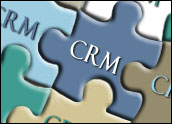
Every interaction an enterprise has with customers, partners or suppliers instigates a new trail of data which over a short period of time can create a deluge effect. Experts predict that within a few years it won’t be uncommon to see enterprises with networks and databases storing over 100 TB (terabytes) of information.
One key area that has contributed to this data explosion is the continued global surge of online transactions. This unprecedented growth is driving demand for better collaboration with back office systems within organizations. IT integrators have begun converging key systems such as enterprise resource planning and customer relationship management with traditional e-commerce solutions.
By converging platforms, elements such as payment processing are greatly improved by automating transactions and enhancing the ability to share information internally as well as with both partners and customers.
Online Payment and Convergence
Online payment has gone beyond simple credit card transactions. Methods such as money transfers and online payment services, which allow payment without the need to expose credit card or banking account numbers, are becoming more commonplace in both B2C and B2B commerce. Research suggests that the labor cost of processing an order through non-integrated systems can range anywhere from US$5 to $16 per order, a tremendous cost for even businesses with a small online footprint. On the flip side, a payment processing system fully integrated with ERP and CRM can lower order processing below $1 per transaction, which can have profound impacts on competitive advantages and overall operation costs.
With an automated entity, useful information about site visitor purchasing habits, payment methods, shopping cart abandonment rate and user interface experience that would otherwise go unnoticed in a disparate system can be collected and charted to improve sales. One prominent online retailer, for example, was able to get a 40 percent jump in the sales of an item by just lowering its shipping cost by 50 cents to bring it under $10, which was a critical break point in the customer’s mind.
In addition, online-based payment processing, when integrated with ERP and CRM, allows businesses to pool valuable information on items such as Web traffic, sales reports, available inventory, promotions and shipping and fulfillment — in real time and across all internal and external channels. The following is a typical example of an e-commerce flow process integrated with ERP:
- An e-commerce order comes in
- Customer’s credit card gets authorized but not charged
- The e-commerce system checks for fraud and if everything is OK the order is automatically sent into the ERP system
- The ERP system checks for credit hold, releasing the order for shipment when the customer is cleared
- Order is shipped and invoice is generated in the ERP system
- A trigger goes back to the e-commerce system and the credit card is charged for the prorate amount on the order shipped automatically. If the full order is shipped then the card is charged fully
- Tracking information is housed on the e-commerce system and a shipping notification is sent to the customer. The customer can log into a Web page and view their tracking information in real time
This approach not only streamlines the most critical internal business processes offering the ability to deliver large volume transactions effortlessly, it also strengthens customer relationships through a heightened degree of user interaction.
Real-World Example
A good example is a recent upgrade by the the United Methodist Church that centered on connecting 35,000 churches, 12 million members and 40,000 employees worldwide with nine Web sites operated by the organization. The project required an integrated e-commerce system that could fulfill diverse functional and transactional needs across the various online storefronts while processing transactions in an automated fashion.
In addition, UMC required a user-friendly system that could be easily updated by business users without the help of site administrators, while keeping technical architecture consistent for easy maintenance.
A scalable e-commerce solution was deployed for UMC that fully integrated into a Microsoft Dynamics ERP system as well as UMC’s CRM system. The project results include improved online operations by empowering UMC site visitors with access to products and services with much faster turn-around time from ordering and fulfillment to tracking and delivery. By automating key processes such as credit card verification and shipping, UMC not only reduced cost, but immediately began to save hundreds of employee hours per month by reducing manual back office tasks.
In this age of information, businesses that can best transform raw data into useful information that improves day-to-day processes will gain tremendous advantages over competition. Converging e-commerce with other key elements such as ERP and CRM is one solid way to tighten interdepartmental operations while enhancing customer service and communication with key stakeholders. Enterprises need to be cognizant, however, of the technical challenges of a large-scale implementation which can range from coordinating IT teams and upgrading existing systems to choosing an integrator with proven experience.
Sandeep Walia is president of Ignify, a provider of e-commerce solutions targeting the enterprise market segment.













































Social CRM
See all Social CRM